Many things factor into the outcome of battle. Any army, no matter how well prepared, can be out-matched by superior tactics or technology. Then there’s the luck factor… as seen in these four brawls.
1.
The Battle of Hastings (1066)
The events leading up to the Battle of Hastings are a bit complex, but here’s a summary: Edward the Confessor dies and the throne is claimed by Harold Godwinson. Some historical texts claim that Edward gave Harold the throne on his death bed. Regardless, this creates complications because Edward also promised the throne to Duke William II of Normandy. Jilted, William declares war and begins an invasion of England shortly after.

Sure beats breaking up with him.
Armed with only twenty-thousand men, William was relying primarily on his formation: archers would lead the charge, followed by infantry before cavalry would break the remaining English formation. Unfortunately, this didn’t happen. Upon gathering at Senlac Hill, William’s forces began the attack immediately. Harold’s front rank was a shield wall and absorbed most of the arrow fire. William’s infantry then had to charge uphill. Taking advantage of the higher ground, English soldiers began throwing anything they could at the oncoming forces, killing hundreds. By the time Harold realized his arrow volley had been completely ineffective, the cavalry’s horses were too startled to charge.
The Luck: After an hour of hand-to-hand combat many of William’s divisions decided to call it a day and fled. At some point in their unorganized retreat, William’s horse was killed while underneath him and sent him to the ground. This prompted even more of his men to flee thinking he had died. Unable to resist the siren call of murder, many English broke rank and charged down the hill while leaving the shield wall behind. Once William recovered, he took the upper hand and ordered a rout, completely devastating the English and shooting Harold right in the eye.
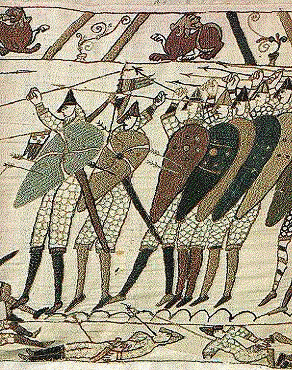
File photo.
Harold was killed and the battle won by the Normans. After further violence and some political strong arming, William was recognized as king of England. However, one of the defining moments in English history would never have happened if his horse hadn’t died and his men weren’t tremendous cowards.
2.
Battle of Stony Point (1779)
During the Revolutionary War, West Point was considered the “key to the continent.” If British forces could hold West Point they believed they would easily be able to take the rest of the colonies without much effort due to its strategic importance. That’s because West Point controlled the Hudson River, preventing the British navy from cutting communication between New England and the other colonies.
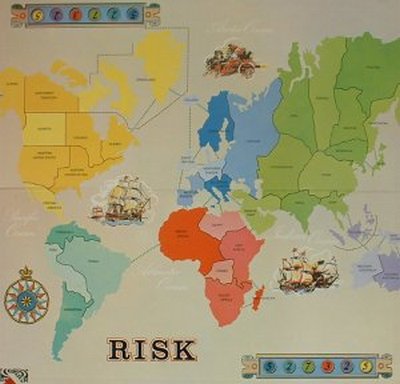
Kind of like New Zealand in RISK.
The campaign to take West Point saw six-thousand British soldiers take two posts at Stony Point, a peninsula twelve miles south. Both posts were taken easily (one without any combat whatsoever) and soon they were both fortified with trenches, walls, and the natural defenses the location gave them. The Hudson river created marshes at high tide, making a charge almost impossible.
George Washington was stationed at West Point and, aware of British intentions, decided not to wait and went on the offensive.
The Luck: Washington left the attack in the hands of Anthony Wayne. Rather than attack the occupied post head-on Wayne drew up a tri-pronged diversionary attack. The first attack would serve as the diversion, attacking the fortification from the front. The second and third would flank. However, the infantry would only wield bayonets as a means to prevent friendly fire.
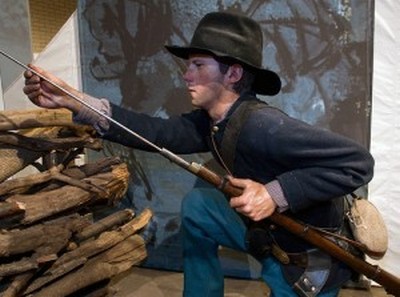
Because you can’t be trusted not to shoot your co-workers in the back.
The same couldn’t be said for the British, and as Wayne lead the southern charge he was struck in the forehead with a musket ball. Wayne survived with a grazing and a severe headache. His men, stunned that he wasn’t an exploded corpse, had to be rallied to continue the attack. The infantry soon invaded the fortification and served up bayonet justice.
Wayne survived the battle with just a major scar. Despite the odds being heavily stacked against him and a musket ball hitting him in the freaking face, he survived to see the end of the war.
3.
Battle of Antietam (1862)
Robert E. Lee, general of the Confederacy, believed that the recently seceded South would gain recognition if they could successfully invade the northern states. This began the Battle of Antietam, the first battle of the Civil War to take place on Northern soil and the single bloodiest day of combat during the war.
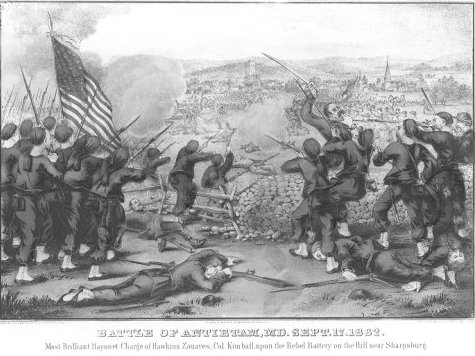
Above: a good idea at the time.
Lee divided his army into five different segments for the invasion, thinking that his army would reunite before the North realized what he was doing. Believing he could out fox an entire military, Lee moved forward with the invasion.
The Luck: Lee could have benefited from owning a file cabinet. Two Union soldiers found Special Order 191, detailing his plans to attack and capture Harper’s Ferry in Maryland. The Union was able to organize and attempt to cut Lee’s forces down before they reached their destination.
The Unluck: In a rare moment of fate shaking your hand before kicking your balls, the counter attack fell on the shoulders of General McClellean, and man notoriously terrible at his job. Even when he accepted the document to be genuine he was slow in getting his forces mobilized, showing up just in time to watch Lee take Harper’s Ferry.
The two armies would meet again at Antietam. Despite McClellean outnumbering Lee by at least thirty-thousand men he didn’t attack for a few days because he was convinced that Lee had a vast number of reserves (he didn’t). When the two finally clashed, McClellean’s wishy-washy nature lead to several uncoordinated attacks, leading to over twenty-thousand soldiers being killed, wounded or captured.
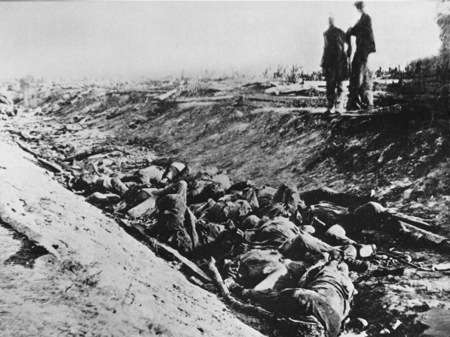
There’s winners in here somewhere.
In the end, Lee retreated into Virginia.
4.
Mongol Invasions of Japan (1274, 1281)
The Mongol Empire was comprised of land making up fifty or so modern countries reaching from Eastern Europe to the Sea of Japan. A series of successful invasions under the leadership of various Khans saw several old world cultures get erased and a great advancement of military technology and tactics. To put it bluntly, these were some bad dudes.
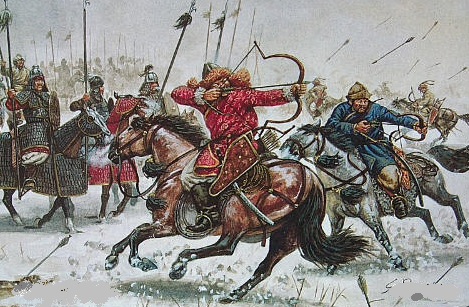
“Are you a bad enough dude to invade mainland China?”
Seeking to expand further, Kublai Khan sent a letter to the “king of Japan” demanding they become a vassal of Mongolia or risk an invasion. The shogunate didn’t respond and instead began fortifying every possible landing space for a sea invasion. In 1274 the invasion came: twenty-thousand soldiers carried in over five-hundred ships ravaged the islands of Iki and Tsushima before reaching Hakata Bay.
The Luck: Despite fighting on their own ground the Japanese were very out of their element. First, there hadn’t been a major military conflict in the country in over fifty years, leaving a lack of experience generals to manage the troops. Second, the Japanese fought in single combat even when using massive armies, something the Mongol army did not do. Finally, the invaders were using weapons and tactics unfamiliar to the Japanese, including early grenades.
Thankfully, that mattered very little. As a storm approached the invaders opted for a temporary retreat so they wouldn’t be marooned on foreign soil. Only a handful of ships remained. Those that didn’t were wiped out by a typhoon, leaving no survivors. This became known as kamikaze, or divine wind.
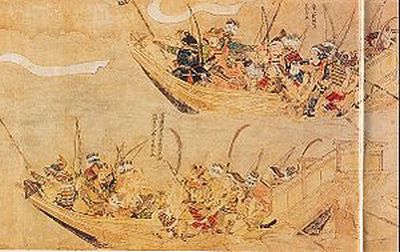
A second invasion was launched in 1281. The Mongols, with over one-hundred thousand men, met a heavily fortified coast and were forced back to their ships. Guess what happened then?
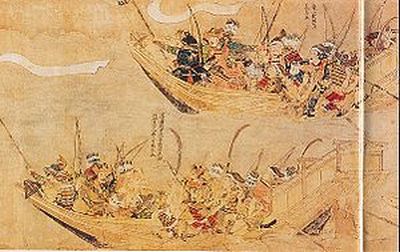
This, again.
Yup, another typhoon. The Mongols failed to ever take Japan thanks to an incredible coincidence and bad weather.
Written by NN – Copyrighted © www.weirdworm.net
Image Sources
Image sources:
- – The Battle of Hastings (1066): http://www.tudorplace.com.ar/images/Plantagenet,WilliamI01.jpg http://www.historic-uk.com/HistoryUK/England-History/harold-hastings.gif
- – Battle of Stony Point (1779): http://cf.geekdo-images.com/images/pic324841.jpg http://moranmustangs.org/hayleyg/files/2010/09/musket-pic-from-flikr-300×223.jpg
- – Battle of Antietam (1862): http://www.glogster.com/media/4/24/91/4/24910491.jpg http://www.farwest.it/FOTOxSITO/2008/10/brady9.jpg
- – Mongol Invasions of Japan (1274, 1281): http://www.historyofjihad.org/mongols13.jpg http://upload.wikimedia.org/wikipedia/commons/thumb/3/3f/Mooko-SamuraiShips.jpg/300px-Mooko-SamuraiShips.jpg http://upload.wikimedia.org/wikipedia/commons/thumb/3/3f/Mooko-SamuraiShips.jpg/300px-Mooko-SamuraiShips.jpg







